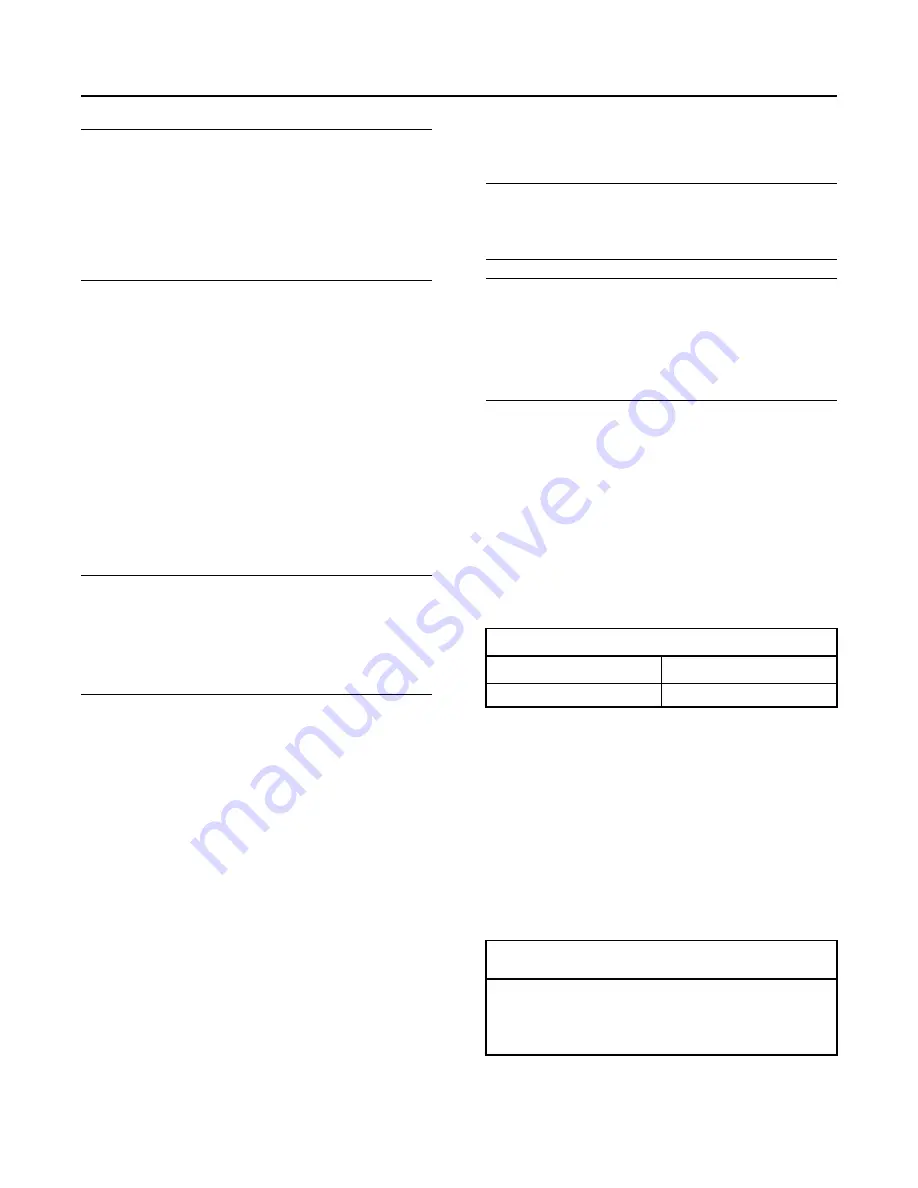
NOTICE
Incorrect or incomplete flushing of the cooling system
can result in damage to copper and other metal
components.
To avoid damage to the cooling system, make sure to
completely flush the cooling system with clear water.
Continue to flush the system until all the signs of the
cleaning agent are gone.
7.
Drain the cooling system into a suitable container
and flush the cooling system with clean water.
Note:
The cooling system cleaner must be
thoroughly flushed from the cooling system. Cooling
system cleaner that is left in the system will
contaminate the coolant. The cleaner may also
corrode the cooling system.
8.
Repeat Steps 6 and 7 until the system is
completely clean.
9.
Fill the cooling system with the Perkins Premixed
ELC.
ELC Cooling System Contamination
NOTICE
Mixing ELC with other products reduces the effective-
ness of the ELC and shortens the ELC service life.
Use only Perkins Products for premixed or concen-
trate coolants. Failure to follow these recommenda-
tions
can
result
in
shortened
cooling
system
component life.
ELC cooling systems can withstand contamination to
a maximum of ten percent of conventional heavy-
duty antifreeze or SCA. If the contamination exceeds
ten percent of the total system capacity, perform
ONE of the following procedures:
• Drain the cooling system into a suitable container.
Dispose of the coolant according to local
regulations. Flush the system with clean water. Fill
the system with the Perkins ELC.
• Drain a portion of the cooling system into a
suitable container according to local regulations.
Then, fill the cooling system with premixed ELC.
This should lower the contamination to less than
10 percent.
• Maintain the system as a conventional Heavy-
Duty Coolant. Treat the system with an SCA.
Change the coolant at the interval that is
recommended for the conventional Heavy-Duty
Coolant.
Commercial Heavy-Duty Antifreeze and
SCA
NOTICE
Commercial Heavy-Duty Coolant which contains
Amine as part of the corrision protection system must
not be used.
NOTICE
Never operate an engine without water temperature
regulators in the cooling system. Water temperature
regulators help to maintain the engine coolant at the
correct operating temperature. Cooling system prob-
lems
can
develop
without
water
temperature
regulators.
Check the antifreeze (glycol concentration) in order
to ensure adequate protection against boiling or
freezing. Perkins recommends the use of a
refractometer for checking the glycol concentration.
Perkins engine cooling systems should be tested at
500 hour intervals for the concentration of SCA.
Additions of SCA are based on the results of the test.
An SCA that is liquid may be needed at 500 hour
intervals.
Refer to Table 16 for part numbers and for quantities
of SCA.
Table 16
Perkins Liquid SCA
Part Number
Quantity
21825735
10
Adding the SCA to Heavy-Duty Coolant
at the Initial Fill
Commercial heavy-duty antifreeze that meets “ASTM
D4985” specifications MAY require an addition of
SCA at the initial fill. Read the label or the
instructions that are provided by the OEM of the
product.
Use the equation that is in Table 17 to determine the
amount of Perkins SCA that is required when the
cooling system is initially filled.
Table 17
Equation For Adding The SCA To The Heavy-Duty Coolant At
The Initial Fill
V × 0.045 = X
V is the total volume of the cooling system.
X is the amount of SCA that is required.
Table 18 is an example for using the equation that is
in Table 17 .
SEBU8172-04
65
















































